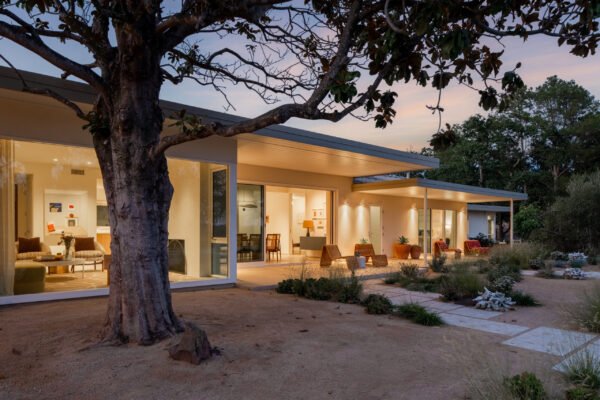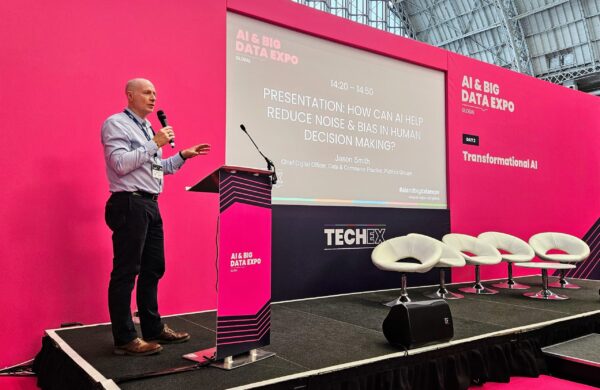
London Mayor Launches Bid to Create World’s First National Park City
Let’s make London the world’s first National Park City! A city where people and nature are better connected.

A huge trail of greenery encircling Greater London, a ‘Green Bus’ network, nature-friendly streets and an app connecting Londoners to the city’s ‘Living Network’ are all winning ideas from the international contest in the bid to transform London into the world’s first National Park City.
The initiative, backed by Time Out London and The London National Park City Foundation, called for ‘ambitious and creative’ designs – open to both student and professional architects, alongside landscape architects, urban planners, illustrators and more. Such visionary ideas could be as small or large scale as designers may want, provided they fed into the notion of a long-term transformation of London. The Greater London National Park City Foundation outlined their visions of a “city where we all enjoy high-quality green spaces, the air is clean to breathe, it’s a pleasure to swim in its rivers and green homes are affordable”.
In a recent conference, Sadiq Khan promised that by 2050 near 50% of London’s surface area will be green. Striving towards this goal, he explained, would be boosted through the use of green roofs and walls in new developments, while improving the quality of existing parks and gardens. The new £9m ‘Greener City Fund’ will not only be directed at this however, as promises to become “carbon zero” by 2050 have also been set in place, including plans to reform waste collection across London boroughs. Increased uptake in renewable energy production is also a major dynamic in achieving this aim, with promises to install 100MW of new solar capacity in London by 2030.
In a recent conference, Sadiq Khan promised that by 2050 near 50% of London’s surface area will be green.
Planning regulations will also have tougher requirements for developers to include green infrastructure, and will push for the use of green architecture and sustainable drainage systems such as ‘rain gardens’. Flood Risk Assessments and other reports are likely to be strictly enforced and companies like UNDA will become more and more called upon. Implementation of such systems should in turn heighten London’s resilience to flash floods during downpours. Only earlier this year a report by CIWEM highlighted the issues with rapidly erecting properties to address the UK’s housing shortages, as unless sustainable drainage systems are deployed on a mass scale, the city’s vulnerability to flooding shall only increase.
In 2012 England’s National Parks even contributed as much to the economy as the UK’s aerospace sector.
Cost effectiveness of the initiative was also emphasised, in that key green assets – from former hunting grounds Green Park, St. James’s Park, Greenwich Park, Hyde Park, Kensington Gardens, Regent’s Park, Bushy Park to Richmond Park – all form a base for further enhancement beneath the scheme. Currently, all 15 of the UK’s National Parks cost each of us just 80p annually and a National City Park should similarly be relatively inexpensive to maintain. National Parks have been a huge scene of attraction and revenue across the UK for a long time now, receiving over 70 million visitors a year on average (according to National Parks). In 2012 England’s National Parks even contributed as much to the economy as the UK’s aerospace sector. The initiative is fuelled from a social, rather than economic, drive in that improved biodiversity and air quality will soon boost community cohesion, improve mental health, and combat childhood obesity amongst the 8.7 million residents of London.

‘The Trail’ is an example of one of the competition’s winning innovations. Chris Rossetto and Emma Lubbers worked together in creating this continuous loop of trees and meadows, which promotes a more relaxed and recreational way to travel across London. A key concept of the design was that these green spaces should wind through, and interlink, inner London’s neighbourhoods. Other winning designs proved equally as inventive – for instance Ann Frobeen also placed focus on travel in her ‘London Green Bus Network’, which aims to introduce a new network of environmentally friendly buses, allowing a wider range of people to access London’s green spaces. ‘The Living Network’ showcased a more high-tech approach to the competition. Here, a group of architects from Farrells designed an app for Londoners to better discover, learn about, protect and grow green city environments. Lastly, Sian and Jon Moxon’s ‘Rewild my Street’ proved enormous potential in its proposal to adapt typical residential streets to ones packed with urban greenery and wildlife – from wildflower meadows to patio ponds, bird feeders, insect holes and more. Community involvement proves vital here, as with other designs, since it is said that London’s 3.8 million residential gardens cover near 24% of the capital in total. The winners saw their visions publicised in London Time Out magazine and on the Greater London National Park City website, as well as a few other honourable mentions.
The Environment Strategy which aims to implement designs is now out for public consultation until November this year. The Greater London National Park City Foundation seem evermore hopeful in their initiative, and continue to echo the idea from their initial proposal that it is entirely possible for the near future:

“Together we can make London a greener, healthier and fairer place to live. Together we can make London a National Park City. Why not?”











































